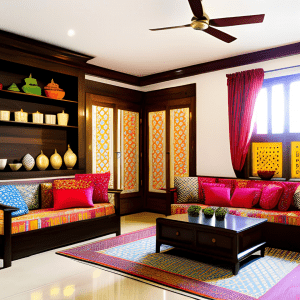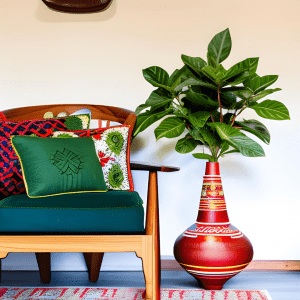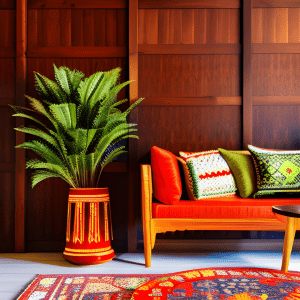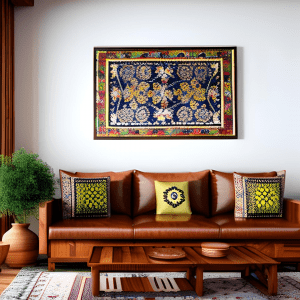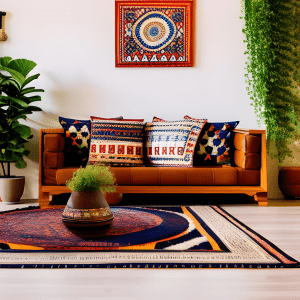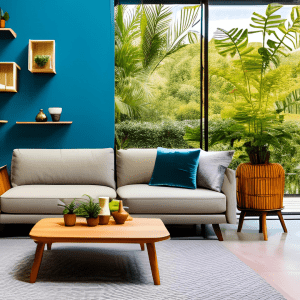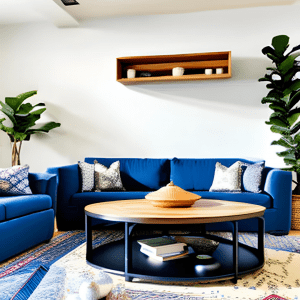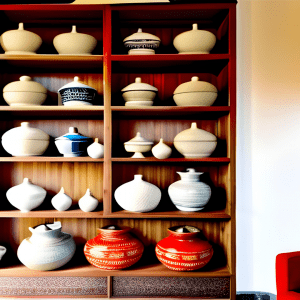Blue Pottery
Popularized by its stunning blue and white hand-painted patterns, blue pottery is a traditional craft from Jaipur, Rajasthan. The pottery has a glass-like finish because it is formed with an original mixture of quartz and uncooked glaze. Vases, bowls, and wall hangings made of blue pottery are frequently used as decorative it
Terracotta
Terracotta is a common type of pottery in India, and its rustic appeal and earthy texture make them ideal for bringing a warm, organic feel to any interior design. Pots, urns, dishes, and other decorative items can all be made out of terracotta. They can be positioned on tables, shelves, or walls to give the space a cosy, earthy feel.
Longpi Pottery
Longpi Pottery Manipur’s black pottery is a distinctive style of ceramic art that has its roots in the northeastern Indian state of Manipur. Using a unique method, the pottery is manufactured by burning grasses and leaves to produce a black colour. Because of its distinctive textures and rustic beauty, black pottery is employed in interior design. They are frequently used as decorative items, and they are available in vases, bowls, and candle holders in many sizes and forms.
Studio pottery
Studio pottery is a contemporary kind of ceramics that is typically produced by lone artists in modest studio spaces. It is renowned for its distinctive patterns, forms, and textures. Vases, bowls, and sculptures made of studio pottery are frequently utilised as ornamental components in interior design. They may give any area a modern, artistic touch
Khurja pottery
Khurja pottery is a type of conventional pottery that was first produced in the town of Khurja in the Indian state of Uttar Pradesh. It is renowned for its distinctive patterns and elaborate designs, which are frequently produced utilising conventional techniques like hand painting, moulding, and carving. Because of its classic beauty, Khurja pottery is used in interior design to create beautiful objects like vases, plates, bowls, and teapots, among other things.
Chettinad Pottery
The Tamil Nadu region of Chettinad is well-known for its distinctive pottery production. Chettinad pottery is distinguished by its complex patterns, vivid hues, and utilisation of regional resources. There are water storage pots, lamps, and decorative pieces like vases and figurines in traditional Chettinad pottery. These items can bring a touch of traditional South Indian charm to any interior design because they are frequently produced by talented artisans.
Bidriware
Bidriware is a type of metalwork that was first produced in the Karnataka city of Bidar. This age-old art includes making elaborate, blackened silver objects using a special alloy of zinc, copper, and other metals. Vases, plates, bowls, and other ornamental pieces that provide a classy touch to any home design are frequently made from bidriware. Bidriware’s unique patterns and designs stand out beautifully against its matte, black finish.
Kutchi Khavda Pottery
Kutchi Khavda Pottery from the Kutch region of Gujarat, Kutchi pottery is a traditional type of pottery. It is renowned for the utilisation of regional materials, elaborate designs, and vivid colours. Mirror work is frequently incorporated into Kutchi pottery to give the finished piece a shimmering appearance. This kind of pottery can provide a splash of colour and texture to any home design and is frequently used to manufacture ornamental objects like wall hangings, vases, and dishes.
Andretta Pottery
Andretta Pottery is a pottery studio located in the village of Andretta in the Kangra Valley of Himachal Pradesh, India. The studio was established in 1983 by the late Mansimran “Mini” Singh, a trained potter and artist. Today, Andretta Pottery is run by a team of skilled artisans who create a wide range of functional and decorative ceramics, including tableware, garden pots, lamps, and sculptures. The studio is known for its use of local materials, traditional techniques, and distinctive designs, and it has played an important role in reviving and promoting the art of pottery in the region
All images credit to AI























